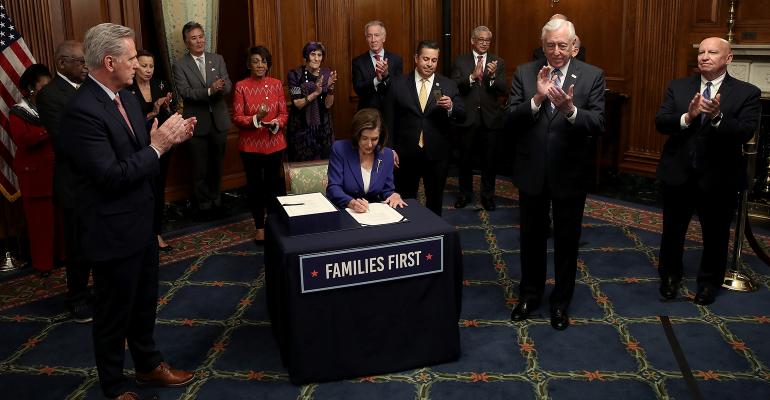The extraordinary $2 trillion price tag of the federal coronavirus rescue bill is enough to make one’s eyes water. With more than any bailout implemented during the global financial crisis, the magnitude of this package could permanently alter America's economy, and with it, the bedrock of capitalism: our public stock markets.
While lawmakers in Washington are rightfully sympathetic to the blistering rush of economic pain experienced by millions of workers, the temporary safety net being proposed will create a slippery slope for which there is no logical end. To have the federal government inject trillions into private businesses and ordinary Americans' bank accounts will alter the natural balance of our economy and create a moral hazard for investments on an epic scale.
The effects of the bailout package will now reverberate across America. Creditors and shareholders of every public company must now consider where they might stand in the capital structure relative to taxpayers. Another challenge that investors are going to need to contend with is the impact of adding trillions to the already massive federal debt at a time when tax collections from corporations and citizens with lower incomes will decrease sharply. As everyone continues to safeguard their health and well-being, it is also important to think about what your portfolio and financial future will look like once this unprecedented global event has dissipated.
The situation in the markets was extremely delicate, if not perilous, even before the onset of COVID-19.
The market gains of the past several years have been built on the poor foundation of record debt, cheap credit and a false belief that central banks have the power to avoid bad events. The most recent rate cuts did nothing to stop a sell-off, and the Fed is left looking desperate in its act on every possible or potential problem. It is a false belief that the Fed has the power to circumvent bad events. The virus could be the catalyst that exposes the emperor has no clothes.
Fiscally, we have borrowed and spent ourselves into a very weak position—even before the onslaught of COVID-19. Now structural deficits and debt are only getting worse. Individuals have little or no savings. Corporations have leveraged their balance sheets on cheap credit for stock buybacks. Monetarily, we have no bullets left.
Once this pandemic ends, investors will be trying to reverse both the short- and long-term damage done to their portfolio. Not only will relying on traditional portfolio construction leave their portfolios at risk to bear markets and black swan events like COVID-19, but also their nest egg is severely at risk in a low- to negative rate environment.
The harsh reality is that the investible universe is radically different today than it was during the 2008 crisis—let alone during the middle of the 20th century when Harry Markowitz’s modern portfolio theory first led generations to believe that a well-diversified portfolio includes a 60% allocation to stocks and a 40% allocation to bonds. This cross-section of believers includes the 10,000 baby boomer investors who turn 65 each day and need their investments to generate stable income upon retirement. Clearly, a plummeting stock market and 0% bonds are a losing proposition.
With all this in mind, investors should be considering how to redefine portfolio construction moving forward. This is obviously easier said than done when one considers what a challenge it can be to achieve true diversification without leaving some returns on the table. It also complicates matters that many once-popular diversifiers, including liquid alternatives and risk parity funds, have lost some luster due to the perception of high fees and mediocre performance.
The good news is that there are plenty of viable portfolio diversifiers out there.
One often-overlooked option is a hedged equity strategy, which can prioritize capital preservation along with the pursuit of strong performance over a full market cycle. An allocation to this type of strategy—not to be confused with a hedge fund product for accredited investors—can either augment existing stock market exposure or replace underperforming fixed income investments.
Modern portfolio theory has given way to modern portfolio fact—that a defined risk strategy is necessary in order to successfully navigate the coronavirus—and post-coronavirus—effect on public markets.
Randy Swan is the founder and lead portfolio manager at Swan Global Investments, based in Durango, Colo.

